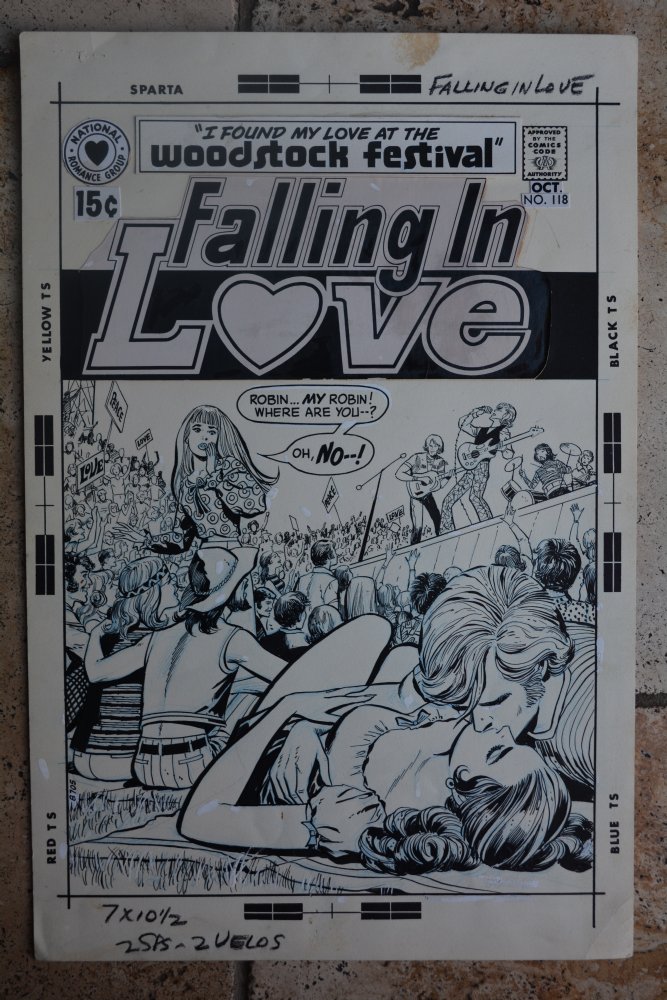Personal Collection // Werner Roth // Falling In Love #118 Cover (Roth/Colletta) (1970)
| Title: | Falling In Love #118 Cover (Roth/Colletta) (1970) |
| Artists: |
Werner Roth penciller
Vince Colletta inker |
| Issue: | 118 |
| Page: | Cover |
| Media Type: | Pencil and Ink |
| Art Type: | Cover |
| Status: | Personal Collection |
| Views: | 1822 |
October 1970, Falling in Love #118 Cover, Werner Roth pencils/Vince Colletta inks, “I Found My Love At The Woodstock Festival”, & Complete 10 pg interior story - Werner Roth pencils/Murphy Anderson inks, I am humbled to own this historic & culturally significant cover & story about the Woodstock Festival of 1969. I found this gem cover and story this week on Ebay. It was sold to me by a very nice guy, Ken, who I met today when I drove out this morning to Huntington, LI and I picked it up. It resided in the collection of a good friend of Ken’s, a man by the name of Bill Emerson, who was a private collector for over 40 years. Bill purchased the cover and story in 1975 for $30 and owned it for 42 years. It was the only piece in his collection he never wanted to sell. He tragically died of cancer a few weeks ago. (Everything else was sold prior to his death. Don’t call Ken). I am honored to become only the second custodian for this great story and glorious cover; I will gladly carry the torch for Bill and keep the cover and story intact. The Woodstock Music and Art Festival was a rock music festival held at a 600acre dairy farm in the Catskills, in the town of Bethel, in upstate New York. It was held on August 15th thru the 18th in 1969 and it attracted an audience of over 400,000. During the rainy weekend, 32 acts performed outdoors before an audience of more than 400,000 people. It is widely regarded as a pivotal moment in popular music history, as well as the definitive nexus for the larger counterculture generation of the 1960s and the “hippie era” In April 1969, Creedence Clearwater revival became the first music group to sign a contract for the event, agreeing to play for $10,000. The promoters had experienced difficulty landing big-name groups prior to Creedence committing to play. Once Creedence signed, everyone else jumped in line and all the other big acts came on. Woodstock was designed as a profit-making venture, aptly titled "Woodstock Ventures". It famously became a "free concert" only after the event drew hundreds of thousands more people than the organizers had prepared for. Tickets for the three-day event cost $18 in advance and $24 at the gate (equivalent to about $120 and $160 today). Ticket sales were limited to record stores in the greater New York City area, or by mail via a post office box at the Radio City Station Post Office located in Midtown Manhattan. Around 186,000 advance tickets were sold, and the organizers anticipated approximately 200,000 festival-goers would turn up. What they got was over 400,000 and a weekend to immortality.
Personal Collection





